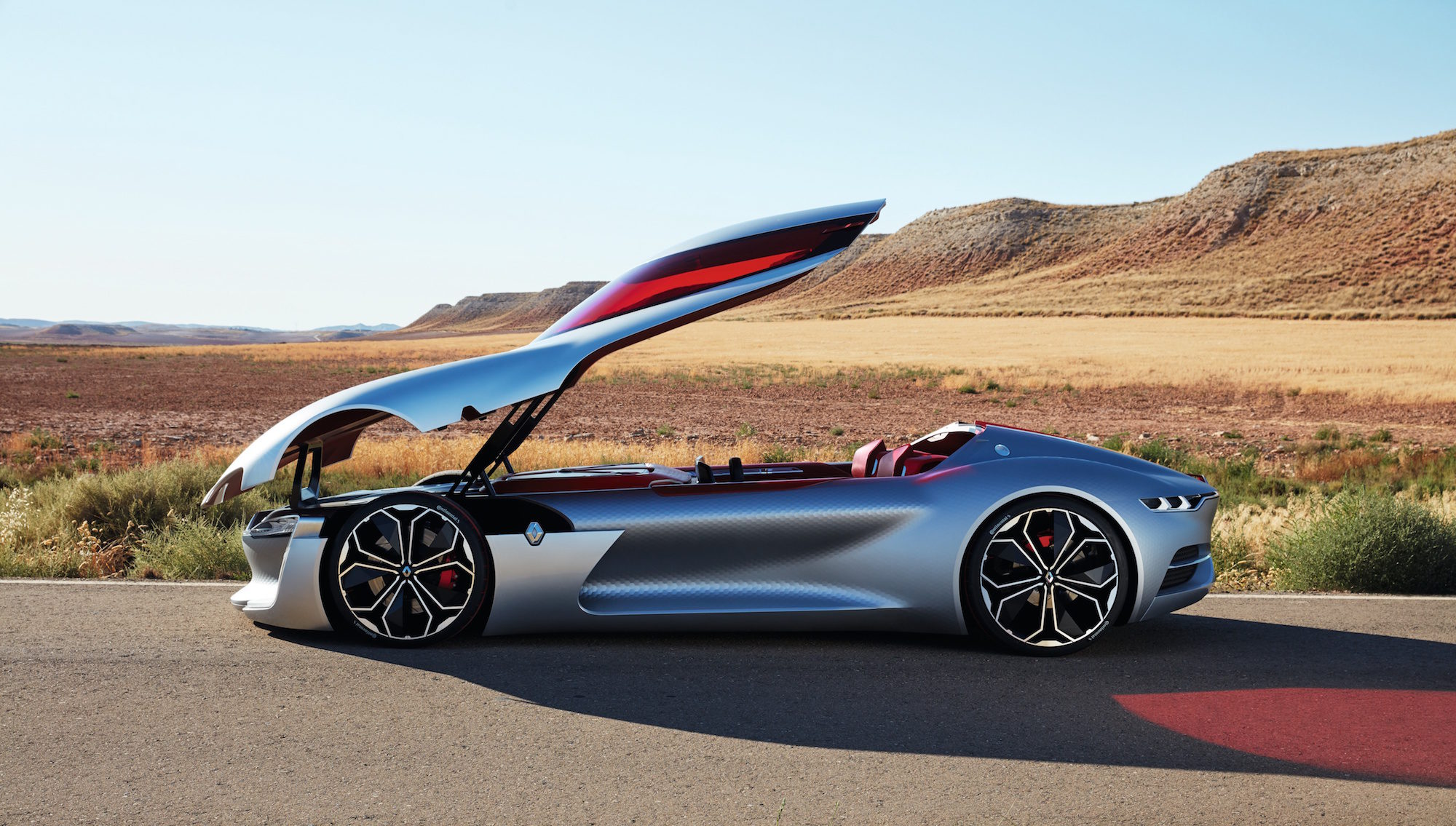There’s a shiny new buzzword sweeping the industrial sector. Whether you’re Lockheed Martin or Nike, “modularity”—the degree to which a product’s components can be recombined in distinct ways—can accelerate production and pad profits. For French automotive giant Groupe Renault, however, modularity represents more than just a strategy for streamlining development. It’s a meaty, all-encompassing philosophy for winning the personal mobility races of the future. It’s Voltaire on wheels.
This summer, Renault has challenged masters candidates in industrial design at Central Saint Martins—the London college where Stella McCartney, Terence Conran, and Alexander McQueen cut their teeth—to noodle deep on modularity: its promise, its limits, and its capacity to engender better mobility experiences. The winning team is slated to exhibit at the “Designjunction” show in King’s Cross (Sept. 21–24), of which Renault is a sponsor. Le grand prix? A two-week session at Renault’s Paris-based Technocentre, one of the industry’s most inventive and conceptual design shops.
The competition is entering its second year, with Groupe Renault VP of Exterior Design Anthony Lo returning to lead the judging panel. And while some concepts will be more fantastical than practical—last year’s winner, called Ouro, was conceived around a form-fitting, two-wheeled suit that rendered its driver a kind of rolling wishbone—Lo believes that tomorrow’s transportation designers must still be pragmatic, and consider end-use cases closely.
“Modularity is already an indispensable concept in car design—our lineup today consists of vehicles that are built on modular platforms and components,” Lo says. “With the shift to electric and autonomous driving technologies, I think modularity will become an even greater design criterion.”
Lo expects tomorrow’s passenger cars to fall into two main categories: urban and long-distance. “For urban use, vehicles will move at relatively low speed and have a minimal footprint to ease congestion and parking issues,” he says. “For long distances, the external shape and form will still have to respond to today’s design fundamentals of weight and aerodynamics.”
Student contestants are not obliged to agree with Lo, however. Despite having built an enviable portfolio from stints at Renault, Lotus, Audi, Mercedes-Benz, and General Motors, Lo acknowledges that even he can’t foresee any single vehicle segment or shape winning out, nor how transportation designers might encourage what today would be called “car love.”
“I do think, though, that owners will still be emotionally attached to certain types of cars they travel in,” he says. One of those cars may already be in view. Renault is showcasing its TreZor concept at Designjunction: a low-slung bludgeon of a sports coupe, with electric power and self-driving capability, unveiled initially at the 2016 Paris Motor Show. “But the ownership model will change,” Lo says.
Indeed, legacy car companies are pivoting away from notions of private ownership, re-envisioning themselves as service providers. (See General Motors’s $500 million investment in the ride-sharing platform Lyft, or BMW and Daimler’s respective car-sharing ventures, Reach Now and Car2Go.) “That’s why we need to provide the best user experience in terms of ordering a car—for short or long-term—that will adapt best to customers’ lifestyles,” Lo says.
For car brands to thrive, in other words, customer service must become the most modular component of them all.

